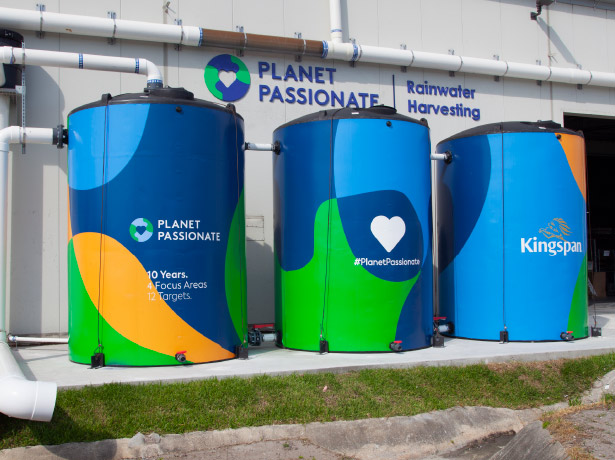Water is one of the earth’s most precious natural resources. It’s a resource that is being depleted by the effects of climate change. Warming temperatures and shifts in precipitation associated with climate change are driving up the risk of severe drought throughout the world. In fact, scientists at NASA project an 80% likelihood of a megadrought – a drought lasting more than three decades – in the U.S. Southwest and Central Plains between the years 2050 and 2099, if greenhouse gas emissions continue to increase along current trajectories.
The cascading effects of drought in the form of water scarcity and intensified fire conditions are very real threats to human health and safety and to the environment. These threats make water conservation an imperative for protecting people and the planet.
Many areas of the United States are being hard hit by drought, including California, which is experiencing its worst drought in 1,200 years, as measured by both lack of precipitation and high temperatures. Currently, 80% of California is classified as in extreme or exceptional drought, the two most dire categories. As severe drought conditions persist, fire risk escalates in the state. Wildfires have burned nearly 2.5 million acres in California this year, filling the air with smoke and reducing air quality in the region and beyond.
A NOAA-led task force studying precipitation and temperatures for six southwestern states including California has concluded that “without efforts to control human-caused global warming, we should consider the current extreme drought a preview of coming attractions for the U.S. Southwest.”
Responsibly managing and conserving water resources is critical to mitigating water scarcity as droughts increase and intensify. Kingspan, through our Planet Passionate program, is working to maximize water conservation with a target of harvesting 100 million liters of rainwater by 2030 to lessen our impact on the world’s water resources.
In drought-stricken California, Kingspan is actively working to conserve water at our Modesto plant. We are harvesting rainwater - collecting and storing rainwater before it is dispersed as surface run-off. Rainwater fuels retention ponds and bioswales (vegetated, shallow, landscaped depressions designed to capture, treat, and infiltrate stormwater runoff as it moves downstream). The plant also uses flow meter drainage wells, which pump water into above or below ground tanks, using the water that is collected as irrigation. The drainage wells reduce its grey water demand. These water conservation measures help minimize withdrawal of groundwater onsite, reduce use of municipal water supplies and mitigate the impact of wastewater released from the plant.
Company-wide we are making progress to conserve water and reduce our impact on local water supplies. Our inaugural Planet Passionate Report highlighted that Kingspan harvested 21.1 million liters of rainwater in 2020. Rainwater collected is used in our operations, sold or donated to the local community.
As the effects of climate change continue to create severe drought conditions in California and regions throughout the world, water scarcity is a rising threat to agriculture, ecosystems, infrastructure and the economy. There is an urgent need to manage our water resources better and we must all do our part to conserve water to reduce the impact of droughts and ensure water security for everyone.


